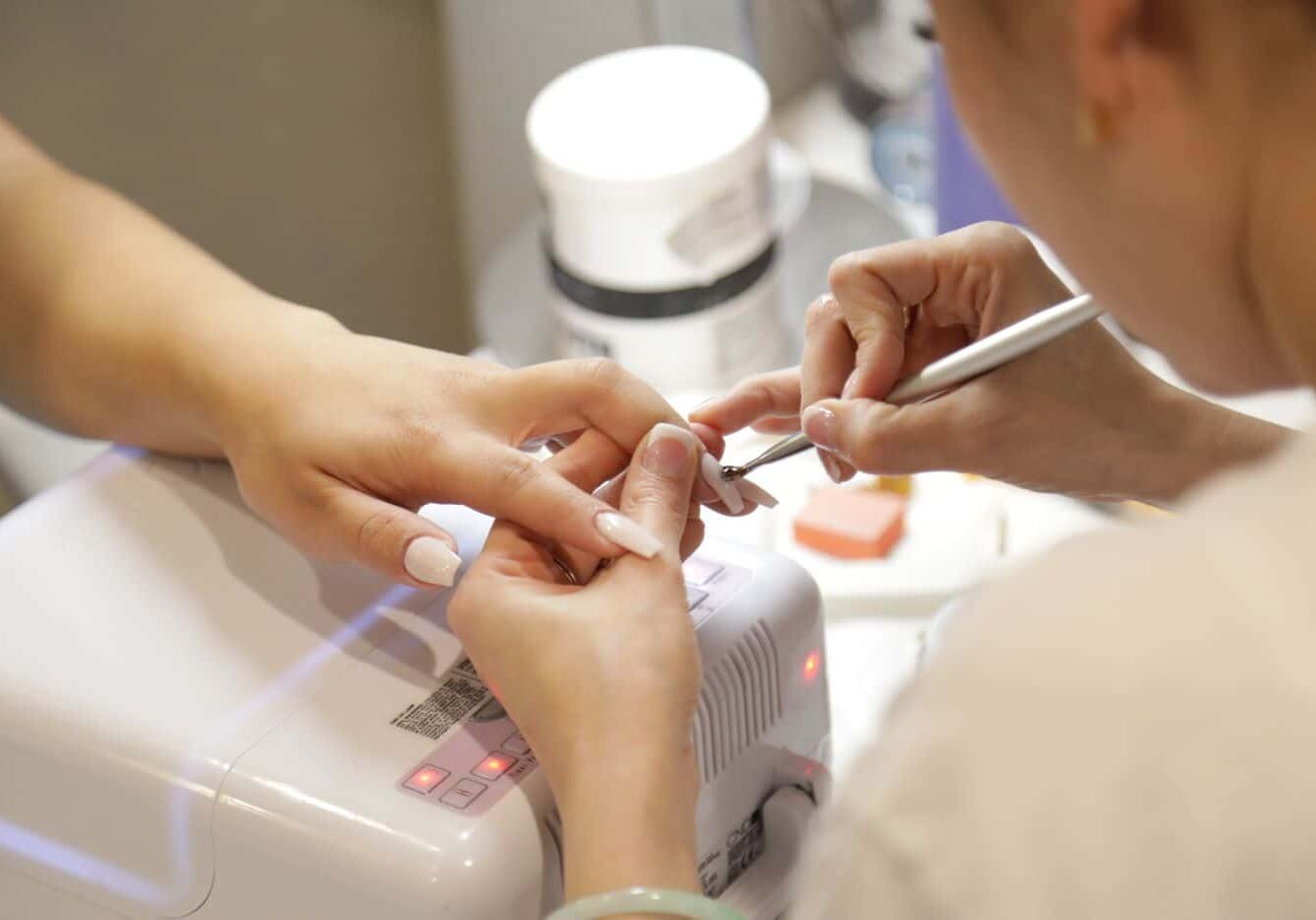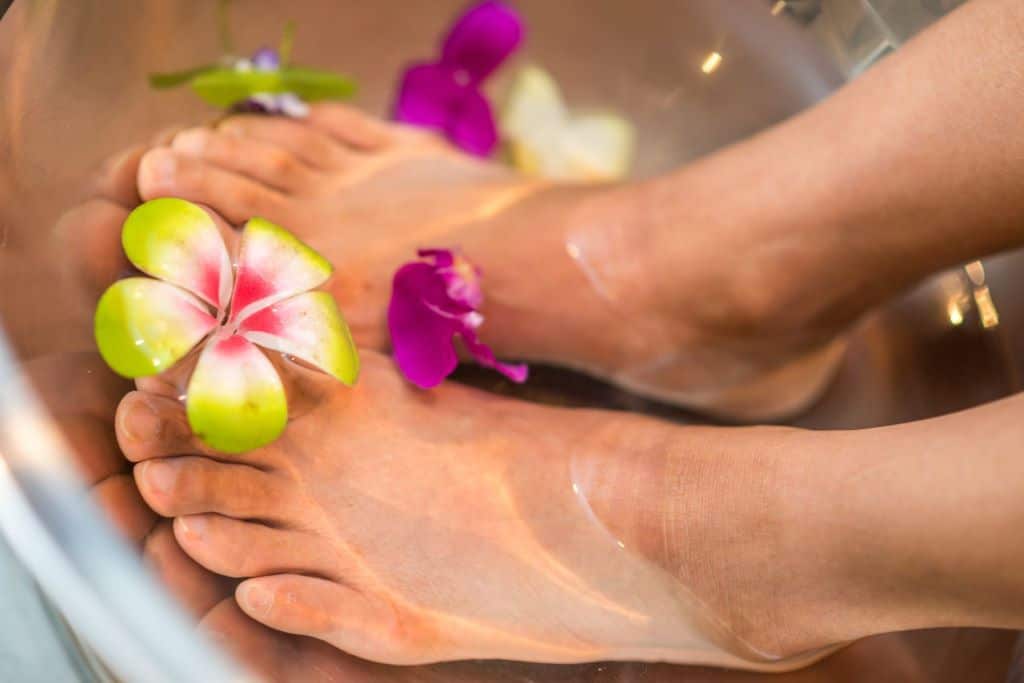Nail Salon Safety & Hygiene 101
Last Updated: August 1, 2024

Shortly after visiting a nail salon for a pedicure, one woman noticed redness on the side of her big toenail. She began to experience pain and discomfort when she walked. Two days later, she was in the hospital. Thinking it was a routine infection, the doctors prescribed her antibiotics and painkillers.
But she didn’t get better. The next day, doctors gave her intravenous antibiotics. And it didn’t stop there. The salon’s client underwent a 10-day antibiotic course. Compensating for the pain in her toe, the woman walked differently, leading to joint pain. A year later, when she was still experiencing pain, she underwent two surgeries.
It was methicillin-resistant Staphylococcus aureus (MRSA), an infection caused by staph bacteria that’s resistant to many antibiotics. Such infections are painful, and they can turn life-threatening when they spread, according to Mayo Clinic. With the help of her legal team at Miller & Zois, the client filed a claim against the nail salon. She alleged her pedicurist used a contaminated callus remover and foot bath, which gave her the MRSA infection. The jury awarded the client with $23,970 in her negligence lawsuit against the salon owner.
For owners, nail salon infections are serious. Clients who receive an infection from your nail salon can experience inconvenience, discomfort, and health complications. At best, affected clients will be unhappy and unwilling to return to your salon. At worst, these clients may become litigious and hold you responsible for their medical bills and emotional harm.
The good news: You have the power to prevent MRSA and other infections from spreading in your salon. By following nail salon safety, sanitation, hygiene, and cleanliness guidelines, you can keep your clients and your business safe.
Let’s talk about manicure and pedicure health and safety techniques.
1. Don’t overbook
Have clients back-to-back all day? While it’s great to be in demand, a full schedule doesn’t give you adequate time for proper nail salon sanitation.
When you’re setting appointments, be sure to incorporate adequate salon cleaning time. Adriana Hammond, founder of Layers Beauty and an assistant instructor at Ark Beauty Academy, recommends planning to clean for 15 minutes between each manicure and 30 minutes between pedicures. Do both for a client? Then it’s going to take 40 minutes to clean.
To save time in between clients, Hammond keeps extra sets of clean implements on hand. Then, she tosses the used one in a box labeled “Dirty Implements” and cleans them all at the end of the day. If you don’t have extra tools, leave yourself more time to clean and dry them fully after each use.
2. Use the right cleaning tools
To properly clean, you need to use intermediate-to high-level nail salon disinfectant registered by the Environmental Protection Agency (EPA), according to this article by NailPro. Hammond recommends Barbicide, though she urges students to never throw tools immediately in the disinfectant solution without washing them first with dish soap. Dirty, debris-filled Barbicide can rack up steep fines for nail salons, she advised.
“Dish soap is the number one thing that I first scrub my instruments and tools with. Then I soak them in a Barbicide solution for ten minutes. That includes brushes, even the bowls that I use to put water in…my nail clippers, my cuticle cutters, anything,” Hammond said. “For cleaning tools, I have a metal brush that I scrub all the debris and stuff [with]. Since some of the products I use are kind of greasy–lotions and stuff like that stays on–that metal brush gets it really well. Another one is just a soft brush for the pedicure chair. I use disposable wipes, they’re Barbicide wipes or paper towels and Barbicide diluted.”
3. Target touch zones for nail salon cleanliness
To make cleaning easier, you can use disposable barriers, like washable towels between your clients’ feet and the footrest of your pedicure chair and disposable bags in your foot baths.
Just know that these barriers aren’t cleaning replacements. You still have to clean the foot bath between each client. After all, there’s a hole in that bag!

4. Use disposable tools when you can
Sanitizing nail care tools is necessary for optimal nail salon hygiene. But in some states, it’s required by law to use disposable tools. For example, some states require that you use a nail file on one client, then toss the file or let them take the file home rather than using it again on another client.
Even if your state doesn’t require disposable tools, consider using one-time tools when possible to prevent nail salon infections. Hammond suggests disposing anything porous, like nail files, pumice stones, gloves, and toe separators.
“I will not use [the same] file on two different clients. Number one, because I don’t think it works as well. … And then infection, it cannot be disinfected,” she said. “Anything that is porous needs to be disposable…with an exception of linens. Linens can be washed and can be disinfected properly.”
5. Wash your hands
To eliminate cross contamination, wash your hands in between clients and after breaks. And we’re not talking a rinse-and-go. You have to scrub for 20 seconds with soap and water for your hand-washing to be effective. When in doubt, sing “Happy Birthday” twice while scrubbing.
6. Pay attention to existing wounds
Existing wounds are more likely to spread nail salon infections than undamaged skin and nails. Using a clean, dry dressing to cover any pre-existing lesions or cuts on a client will protect them, future clients, and you, says NailPro in the article mentioned earlier.
“If it’s in the feet, I probably won’t soak it or anything like that. I would not do a full pedicure. I can tell pretty well based on my training if it’s infected or not, and so, most likely, I won’t [do the pedicure],” Hammond said. “I have had clients who had wounds from picking at their fingers. Those, I still would work on them. The only downside is that I use rubbing alcohol to clean my nails, and so it’s gonna burn. Unless it’s infected, then I would be a little bit hesitant. I would tell them that they need to wait for that infection to go away.”
7. Train your staff
Sanitizing nail care tools is necessary for optimal nail salon hygiene. But in some states, it’s required by law to use disposable tools. For example, some states require that you use a nail file on one client, then toss the file or let them take the file home rather than using it again on another client.
Even if your state doesn’t require disposable tools, consider using one-time tools when possible to prevent nail salon infections. Hammond suggests disposing anything porous, like nail files, pumice stones, gloves, and toe separators.
“I will not use [the same] file on two different clients. Number one, because I don’t think it works as well. … And then infection, it cannot be disinfected,” she said. “Anything that is porous needs to be disposable…with an exception of linens. Linens can be washed and can be disinfected properly.”
Manage your risk with nail salon safety and nail tech insurance.
Whether your salon sparkles or you have room to improve, every nail tech and salon needs insurance. Insurance can protect you when a client gets hurt–or alleges they’re hurt–as a result of your services. Having experienced insurance professionals in your corner can take the stress out of complaints and lawsuits so you can get back to business.
To get a quote for our insurance for nail professionals, click here.
